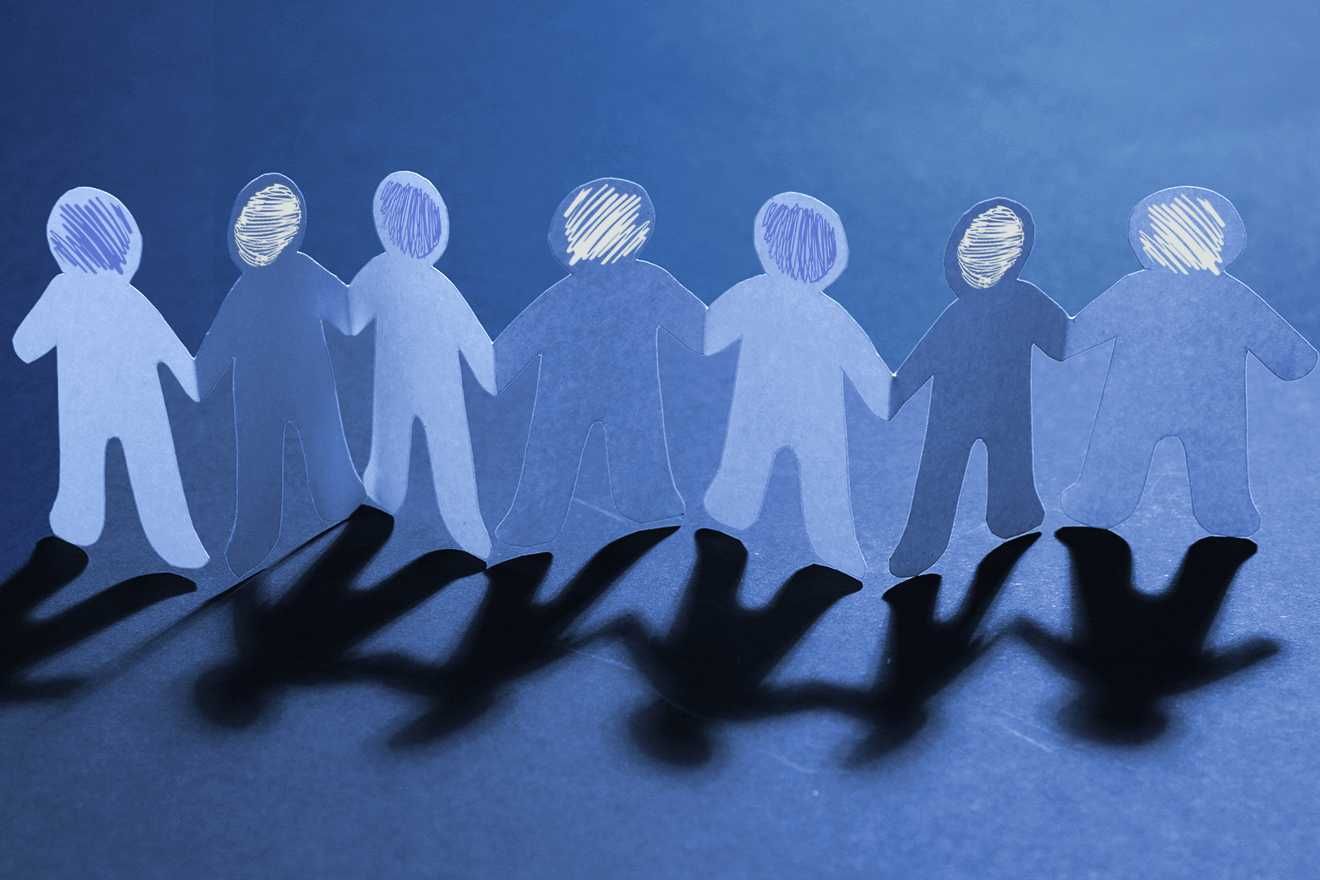Everyone has experienced moments where they feel sad, upset, and unhappy. And some have felt deep sorrow and grief. What does it mean to have depression? What are the different types of depression? There are 7 common types of depression.
Depression is a common and serious medical illness that causes a person to persistently feel sad with a substantial loss of interest in the things that previously brought them joy.
Although it is often seen as a mood disorder, depression can affect all areas of a person’s life beyond their mental health; it can contribute to physical, social, and emotional problems and negatively impact their ability to function on a daily basis.
Continue reading below to learn more about the most common types of depression and how to differentiate the symptoms between them.
1. Major Depression
According to the 2020 National Survey on Drug Use and Health (NSDUH), it is estimated that 21.0 million adults in the United States had at least one major depressive episode.
Major depression is often referred to as “clinical depression”. It’s a severe form of depression, characterized by intense symptoms. Other terms that have been used include major depressive disorder, unipolar depression, severe depression, and classic depression
Some of the symptoms of major depression include the following:
- Feelings of sadness, hopelessness, and/or worthlessness
- Feelings of grief and/or gloom
- Lost interest in activities and things that used to bring them pleasure
- Sleeping problems such as trouble falling asleep, staying asleep and/or sleeping too much
- Aches and pains without physical cause
- Changes in appetite, eating habits
- Changes in weight
- Feeling tired often and/or lacking energy
- Difficulty focusing, remembering things and making decisions
- Thoughts of hurting themselves, death or suicide
Some people can experience these symptoms for weeks or even months. A person may have one episode of major depression; others may experience some major depression symptoms for the rest of their life.
2. Persistent Depressive Disorder (PDD)
A long-term type of depression in which a person experiences symptoms for over 2 years is called persistent depressive disorder (PDD). This is also referred to as chronic depression or dysthymia.
For those with PDD, their symptoms are long-lasting; they may begin to view them as part of their normal life. Some of these include:
- Poor self-esteem
- Feelings of anger and/or irritability
- Feelings of sadness, hopelessness, guilt, and/or inadequacy
- Sleeping issues
- Constantly tired and/or low energy
- Problems with memory and concentration
- Difficulty with feeling happy even in joyful situations
- Changes in appetite and/or eating habits
- Decreased interest in hobbies or activities that they used to enjoy
- Lack of desire to socialize
The effects of PDD may not be as severe as major depression; however, PDD can disrupt a person’s life, affect their relationships and create challenges in accomplishing their daily activities of living.
3. Premenstrual Dysphoric Disorder
Many women have experienced the symptoms of premenstrual syndrome (PMS) which include bloating, cramping, moodiness, tiredness, irritability, aches, and cravings.
The similarity between PMS and premenstrual dysphoric disorder (PDD) is that they both typically occur about a week or two before the start of a period. It is during this time when hormone levels begin to drop as ovulation is finished.
However, the difference between PMDD and PMS is the severity of the symptoms. Specifically, unlike PMS, PMDD usually involves more intense symptoms that are related to mood including irritability, anxiety, tension, and depression.
Other symptoms of PMDD can include:
- Intense feelings of stress, anger, sadness, and hopelessness
- Frequent crying
- Cramping, bloating, headaches, and breast tenderness
- Sleep issues
- Severe fatigue and little energy to do anything
- Food cravings and binging
- Muscle aches and joint pain
- Difficulty concentrating
- Drastic shifts in mood
Although PMDD symptoms tend to go away on their own around two to three days after a period begins, it is a health problem that should not be dismissed. PMDD is a serious condition that can significantly disrupt a person’s livelihood and ability to function at work and in relationships. In extreme cases, it can lead to thoughts of self-harm and suicide.
4. Perinatal Depression
Perinatal depression is a common type of depression that occurs during pregnancy or after giving birth. It is also referred to as major depressive disorder with peripartum onset. When it occurs after childbirth, it is called postpartum depression.
Some of the common symptoms of perinatal depression include:
- Feelings of sadness, helplessness, hopelessness, and guilt
- Extreme mood swings
- Persistent fatigue and exhaustion
- Abnormal changes in appetite and/or eating habits
- Difficult connecting with the baby
- Resisting social interactions
- Inability to enjoy things that were once pleasurable
- Trouble taking care of oneself and/or the baby
- Anxiety, anger, rage and/or panic attacks
- Profound worry about the baby’s safety, health and well-being
- Thoughts of self-harm or hurting the baby
- Thoughts of suicide
Similar to PMDD, perinatal depression can be triggered due to hormonal changes that affect the brain and cause mood issues. During pregnancy, labor, delivery, and postpartum recovery, hormone levels go through a rollercoaster. These changes are further exacerbated by the challenges of parenting a newborn including lack of sleep, exhaustion, physical pain, social isolation, and breastfeeding struggles.
5. Seasonal Affective Disorder (SAD)
Seasonal Affective Disorder (SAD) is one of the common types of depression where one feels abnormally sad or experience a low mood during the darker months but starts to feel better come spring. This is also referred to as major depressive disorder with seasonal pattern. Some of the symptoms that people with SAD experience include:
- Weight gain
- Sleepiness, sleeping much more than usual
- Constant feelings of sadness, unworthiness, hopelessness
- Tired, sluggish, and lethargic
- Decreased desire for socialization
Currently, there isn’t a definitive explanation for why people get SAD; however, research indicates that it may be related to a disruption of the normal circadian rhythm of the body due to reduced exposure to daylight during the darker months. Sunlight helps the body manage levels of serotonin, a neurotransmitter that regulates mood; however, decreased exposure to light causes a drop in serotonin, leading to mood and behavior changes.
For some people with SAD, their symptoms can worsen and cause frequent thoughts of death and suicide.
6. Bipolar Disorder
Bipolar disorder is a mental illness that causes a person to have abnormal mood shifts and unusual changes in energy, concentration, and activity levels. It used to be called manic depression but the term is now considered outdated
Specifically, bipolar disorder is characterized by periods of mania or hypomania. Some of the signs of a manic phase include:
- Grandiose thinking, feeling important and/or powerful
- High level of self-confidence and self-esteem
- Unusually high level of energy and activity
- Decreased sleep
- Feeling high, elated, euphoric, and/or wired
- Speaking quickly with many ideas
- Highly irritable
- Racing thoughts
- Strong desire for pleasurable activities such as eating, having sex, drinking alcohol
- Thrill-seeking and risky behaviors
Most people with bipolar disorder also experience depressive phases. Some of the symptoms include:
- Feeling sadness, down and/or empty
- Extreme fatigue
- Difficulty sleeping
- Speaking slowly and/or not having anything to say
- Trouble focusing and making decisions
- Forgetfulness
- No interest in doing anything even activities they once found pleasurable
Mixed episodes can sometimes occur in people with bipolar disorder. This is when they have both depressive and manic symptoms at the same time. For instance, they may feel sad and hopeless but have lots of energy. Delusions and hallucinations can occur in extreme cases.
Follow your Curiosity
Sign up to receive our free psychedelic courses, 45 page eBook, and special offers delivered to your inbox.7. Atypical Depression
Atypical depression is one of the common types of depression where a person experiences symptoms of depression temporarily and then feel better after a positive event. This is also referred to as depressive disorder with atypical features. Some of the symptoms of atypical depression include:
- Overeating, increased appetite, and weight gain
- Disordered eating
- Sleeping more than usual
- Sleep problems such as insomnia
- Feeling “weighed down” where the legs and arms are heavy for an hour or more
- Poor body image and self-esteem
- Extreme sensitivity to criticism, rejection, and judgment
- Severe moodiness
- Aches and pains
The heavy feeling in the arms and legs can often lead to an inaccurate diagnosis of chronic fatigue syndrome. Generally, patients with atypical depression respond well to antidepressants.
These are the most common types of depression. There is no cure for depression and it doesn’t go away forever; however, there are many effective treatment options available. By seeking help from a mental health professional in conjunction with lifestyle changes, support groups, therapy and medication, a person can recover from depression and resume a normal and healthy life.
However, everyone responds to these treatment options differently and these methods may not lead to a complete recovery for some. Psychedelic-assisted therapy is a form of therapy that uses psychedelic substances in combination with therapy to treat mental health disorders. Clinical trials and research has been shown to be effective for PTSD and depression.
Psychedelic Support offers a vetted psychedelic therapy directory of mental health providers. Find a licensed provider today.
- Depression. National Institute of Mental Health (NIMH).
- Major depression. National Institute of Mental Health (NIMH).
- Patel RK, Rose GM. Persistent depressive disorder. In: StatPearls. StatPearls Publishing; 2022.
- Premenstrual dysphoric disorder (Pmdd) | Office on Women’s Health.
- Perinatal depression. National Institute of Mental Health (NIMH).
- Seasonal affective disorder. National Institute of Mental Health (NIMH).
- Bipolar disorder. National Institute of Mental Health (NIMH).
- Singh T, Williams K. Atypical depression. Psychiatry (Edgmont). 2006;3(4):33–39.






